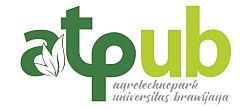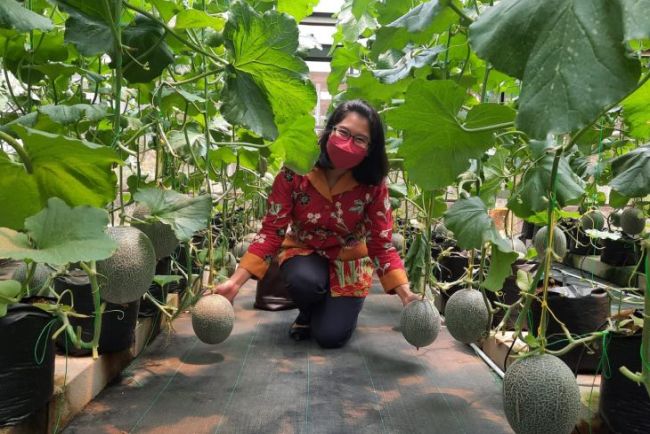
 |
|
|
"Logically when the soil is dry, the 'drip irrigation system' is active. How much water content is in the medium when the drip system is active, as well as data and information related to the mechanism, are sent via an IoT connection. In principle, water has been applied with additional nutrients," Eka explained to visitors on Friday.
The drip irrigation system cannot only be used for irrigation, said Eka, but also for determining nutritional needs, lighting, temperature and humidity in the melon garden greenhouse, among others things.
"In the process, the 'drip irrigation system' works according to the nutritional needs of each plant. So it is not just how much it irrigates the plants, but according to the age of the plants. Control of this system is monitored in terms of time and data variables that have been recorded before," Eka explained.
Suyadi, Manager of Agriculture and Development at the Agro Techno Park, said the process of providing nutrients to plants periodically through water flow to the media is based on the needs of the plants.
"In a day, it can be done 5 to 10 times, so with this technology, we do not need to manually provide nutrients. It can be left to do other work, because it will automatically turn on the 'drip irrigation system' and flow nutrients to the planting media according to the needs of the plant," he noted.
Suyadi pointed out that the use of IoT has made work easier because the machine turns on automatically whenever the planting media needs nutrients. "So that there is no shortage of nutrients. Because if we are doing it manually, then we still use our instincts when plants need nutrients," he said.
The application of the drip irrigation system, he said, has turned out to give maximum results to melon plants. "The fruit yields can be better and ideal because the availability of nutrients is stable. If the nutrition is not stable, then the development of melons is not optimal; the fruit can break or the sweetness level will be low," he noted.
Melons that are cultivated using the 'drip irrigation system' are of premium quality, starting from the taste, netted skin that is neatly arranged, and the ideal weight compared to conventional melons, he said. "The market is exclusive, so the taste is definitely different from what is sold in the conventional market. In Jatikerto (Malang), there are several varieties of melon including rock, golden, and honey," Suyadi added.
He explained that the technology-based agricultural cultivation process in Jatikerto is also being used as a laboratory for students majoring in electrical engineering. "If melon plants are cultivated using a hydroponic system, then what the student does is aeroponic cultivation of vegetables," he said.
In addition to nutrients that are more easily absorbed, planting with the aeroponic method also leads to faster growth because it uses LED lighting that is more constant than sunlight, he explained. "We can use LED light to trigger the generative phase and the vegetative phase in plants, resulting in increased nutrition, faster growth, and obtaining the desired leaf texture and taste," he said.
One of the team members who is also an electrical engineering student, Muhammad Romadhani Prabowo said that with the drip irrigation system, plants will be protected from pests or fungi. Vegetables will be safer to eat as they will not even need to be washed, he said. The quality of the harvest will also be more durable than in hydroponic plants, he added.
The concept of aeroponics is currently applied to hydroponic plants, such as lettuce, mustard greens, bok choy (type of Chinese cabbage), basil, and spinach, he said. "Currently, we are also exploring (the drip irrigation system to be implemented for) herbal plants for treatment or plants with high economic value, such as mint and lemon balm," Prabowo said.
Meanwhile, the development of IoT-based melon cultivation has arisen from the management of horticultural agriculture in Indonesia, which is still mostly done conventionally and with minimal use of technology, he said. This has had an impact on the instability of crop productivity, he added.
Visit Brawijaya University at https://ub.ac.id/ and the Agro Techno Park at http://atp.ub.ac.id/.
By A. Malik Ibrahim, Yashinta Dif
Editor: Suharto
Copyright (c) Antara 2021
Copyright 2021 ACN Newswire. All rights reserved. www.acnnewswire.com
source https://www.acnnewswire.com/press-release/english/70452/